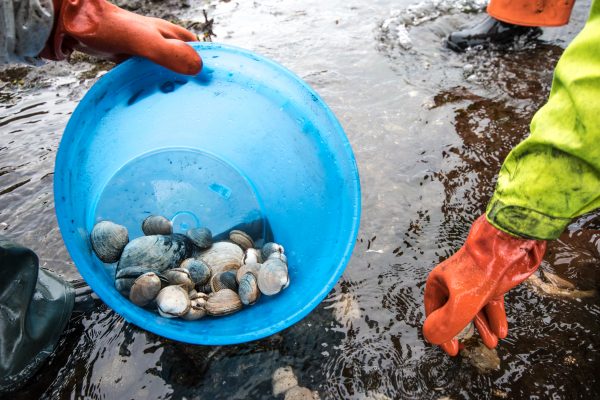Network will assist safe shellfish harvest in Alaska
January 31, 2018
Paula Dobbyn
907-274-9698

A new network of experts from across the state will work to help Alaska communities better understand and mitigate the effects of harmful blooms of algae, including the toxins they produce and the potential health risks to humans and animals.
Partners in the Alaska Harmful Algal Bloom Network aim to improve public awareness, research, monitoring and responses statewide.
Harmful algal blooms are caused by certain phytoplankton that produce toxins. The blooms can poison humans, fish, seabirds and wildlife that consume toxic shellfish. Alaska has had four human fatalities and 123 reported cases of paralytic shellfish poisoning since 1993, all linked to wild shellfish. Recent die-offs of marine mammals also may be linked to harmful algal blooms.
The Alaska Department of Health and Social Services' Division of Public Health recently said climate change is likely to increase the threat of harmful algal blooms. Warmer waters extend the phytoplankton growing season, increasing the likelihood of toxic blooms, and may allow new potentially harmful phytoplankton species to expand their ranges to Alaska.
Commercially harvested shellfish available in stores and restaurants have passed federal Food and Drug Administration-approved and state-run toxin testing and are safe. However, there is no routine testing of shellfish for personal and subsistence shellfish harvest. While there is no way to guarantee safety of personal and subsistence harvested shellfish, the AHAB Network strives to share monitoring and research efforts to provide information to coastal Alaskans on harmful blooms. Eventually, the network hopes to develop the ability to forecast such blooms.
The newly launched AHAB Network website (http://www.aoos.org/alaska-hab-network) provides information from regional groups with explanations of the various research and monitoring efforts around the state.
The AHAB Network website also offers news, resources and information. It features a video on how bloom toxins get into food and how members of the public can protect themselves.
The AHAB Network is coordinated jointly by the Alaska Ocean Observing System and Alaska Sea Grant.
CONTACT: Ginny Eckert, co-chair of the Alaska Harmful Algal Bloom Network, 907-796-5450, ginny.eckert@alaska.edu.


